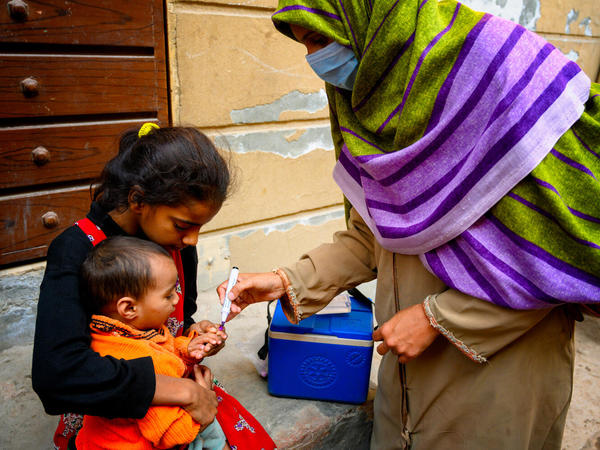Evidence-driven communication for polio eradication gathers and analyzes data through a communication lens with missed children at its focal point. Analyzing existing programme data, including social data, can propel us toward communication actions that can have the strongest impact. Whom do we most need to reach? With what messages and actions? Why, where, when and how?
Communication that is driven by evidence helps to:
- Focus efforts on the actions that are most likely to achieve our goals;
- Rationalize use of time, funds and other programme resources;
- Provide a basis for measuring progress, impact and performance;
- Motivate teams, as efforts deliver tangible results;
- "Make the case" for communication as the crux of eradication efforts
In evidence-based communication, data drive planning and action. Results are then measured, providing further data for decision making.
The polio eradication programme offers plenty of data for analysis which, along with other types of data from your formative research, can help to identify critical areas of focus for programme design.
There are three major types of data that are available to programme managers:
Epidemiological Data
- Routine Immunization system data, including administrative data (self-reported data on vaccination coverage by vaccination programme) as well as independent coverage estimation surveys
- Surveillance data, derived from the AFP (Acute Flaccid Paralysis) monitoring system, also provides an important outlook on immunization coverage and existing immunity gaps through tracking vaccination status of non-Polio AFP cases.
- SIAs (Supplementary Immunization Activity) monitoring: Intra-Campaign Monitoring - during vaccination campaigns; Independent Monitoring, also known as Post-Campaign Assessmentor, in short “IM Data”; Lot Quality Assurance Sampling that assess programme quality through number of benchmarks.
Social Data
- Population analysis: national census and population estimates, demographic studies, multiple indicator cluster survey (MICS), and others.
- Social studies: social norms analysis, mapping of social networks, ethnographic and anthropological research, qualitative studies on perceptions and cultural beliefs
- Knowledge Attitude and Practice surveys: polls that measure knowledge, attitudes and practices in relation with a certain health behavior
- Mixed-migration and mobile population studies (studies on nomadism and pastoralism, economic migration, refugees and displaced populations routes, transportation hubs and flows)
- Mass Media studies: media landscape and audience analysis, media monitoring, tone analysis
- Case investigations (polio case investigation and AFP forms, including social profile of the affected family and community)
- Communication indicators of in-house SIA monitoring systems and platforms
- Microplans social data (local influencers, particular settlements, minority and underserved groups, etc.)
Other Programme Data
- Pre-campaign preparedness reports by in-house monitoring teams (status of planning, training, government leadership)
- Supervision data by frontline worker supervisors and partners through existing monitoring platform
- Mission reports by GPEI staff
- Other epidemiological and programme operation reports on vaccine management, campaign bottleneck analysis and others
- Programme evaluations
Learn more
Explore the other two learning modules in this 3-step tutorial to design evidence-driven communication strategies to help vaccinate every child.
Integrate communications tactics and understand their strengths and weaknesses, then evaluate performance.
Define your target audience and barriers to change, then develop messages and choose channels to reach your audience.



